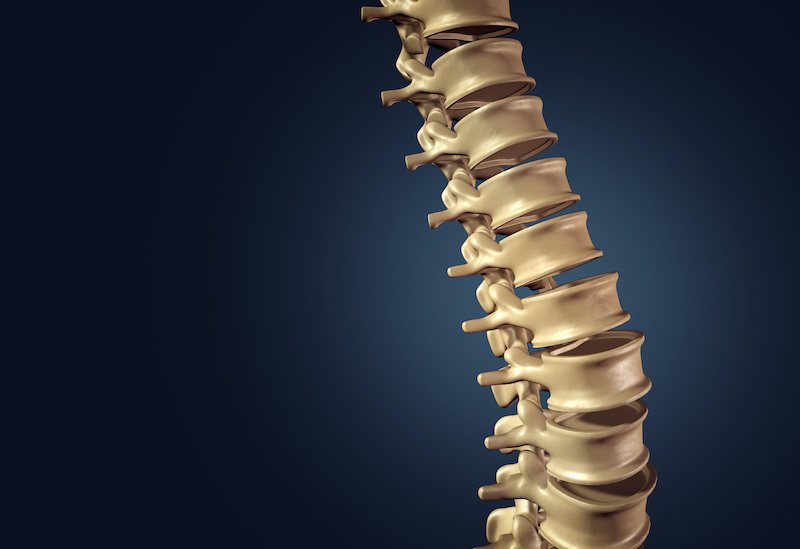What Causes Back Injuries in the Workplace?
Back injuries in the workplace can be caused by a number of factors, but there are three main categories:
- Force. The most common cause of back injury in the workplace is force. This is any situation that applies a great deal of weight or strain to your back. A common example would be lifting or carrying a heavy object.
- Repetition. There is a misconception out there that back injuries are always caused by heavy lifting. While heavy lifting (force) is a common cause of back injury, repetition can be just as dangerous. Repetitive strain to the back, from lifting and carrying even light objects, to frequent twisting and bending, can cause chronic back pain and back injuries in the workplace.
- Inactivity. Inactivity is another common cause of back injuries in the workplace, though it is often overlooked. Sitting for prolonged periods of time, especially with poor posture, can put a lot of strain on your back and cause chronic pain.
6 Back Injury Prevention Tips to Stay Safe in the Workplace
Now that we know why back injuries occur, we can better understand how to prevent back injuries in the workplace. These six tips can help you reduce strain on your back while you’re working:
01. Ensure You Are Lifting Properly
As mentioned, the force applied to your back when you lift heavy objects can cause a back injury. One of the best ways to protect yourself is to make sure you’re lifting properly. Here are a few tips to keep in mind to prevent back injuries while lifting in the workplace:
- Before you lift anything, size up the load. Can you lift this yourself, should you ask a teammate for help, or can you use a mechanical lifting device?
- Next, make sure your carrying path is clear, with no obstacles to navigate around.
- Directly face the object to be lifted.
- Stand with feet about shoulder-width apart, and make sure your weight is evenly distributed on both feet.
- As you bend down to lift, bend with your legs — not your back.
- Make sure the object is as close to you as possible.
- Use your legs and tighten your core muscles to lift straight up, without twisting from side to side.
- Keep the object close to your body while lifting and carrying.
- Make sure to maintain the natural curve of your back — don’t twist or lean while you’re lifting or carrying an object.
02. Pay Attention to Your Posture
While back injuries are most often associated with physically demanding tasks like lifting and carrying objects, employees who sit at a desk all day can also put themselves at risk for a back injury. To protect your back, make sure you’re working with good posture throughout the day, and seek support from items like ergonomic chairs and adjustable desks.
- Don’t slouch at your desk.
- Make sure you’re sitting with both feet flat on the ground.
- Choose an ergonomic chair that supports your spine, and take time to adjust your chair so that you are sitting comfortably with both feet on the floor and knees at a 90° angle so your thighs are parallel to the floor.
- Adjust your desk so you’re looking straight ahead, rather than craning your neck up or down.
- If using a computer, make sure your monitor is at a distance and height where you can comfortably see your entire screen (or multiple monitors) without having to lean forward, backward, or twist uncomfortably.
- Move often. Long periods of inactivity are hard on your back. If you have a desk job, it’s a good idea to get up at least once an hour to stretch, move around, and give your back a break.
03. Modify Repetitive Tasks for Your Safety
Whether you’re regularly lifting objects or taking calls, repetitive tasks strain your body and particularly your back. To prevent back injuries in the workplace, it’s a good idea to modify repetitive tasks to make them more comfortable and reduce the strain on your back. For example, if you lift items repetitively at work, consider lift-assist tools. If you are regularly taking phone calls, opt for BlueTooth headphones or a headset to ensure you’re not cradling a phone between your neck and shoulder for long periods of time.
04. Strengthen Your Core to Protect Your Back
Your back and your core work in tandem to help you do just about everything. From standing up straight to lifting, your back and core do much of the work of stabilizing your body. Working to strengthen your core with regular abdominal exercises and stretches can help take some of the strain off of your back when you’re doing a lot of lifting and repetitive motion at work.
05. Stretch Regularly
Muscle tightness is another key contributor to back pain. Make sure you’re stretching out your back, legs, arms, and core muscles regularly, as they are all connected by your back. Stretching can help reduce back and joint pain by relieving muscle tightness and imbalance.
06. Stay Healthy
Your overall health has an impact on your entire body. When you’re not eating well, not moving, or stressed, all of those factors weigh on your body and can contribute to back pain. The best way to prevent a back injury in the workplace is to do what you can to keep healthy. A healthy body is less likely to sustain an injury and can heal much faster in the event that you do injure yourself. Here are a few key healthy activities that can help prevent back injuries and back pain:
- Drink plenty of water.
- Stay active. Exercise regularly and take breaks to stretch and walk around if your job requires you to sit at a desk for prolonged periods of time.
- Maintain good eating habits.
- Get enough sleep and try to sleep in a posture that protects your back.
Back pain and injuries are common but preventable. By taking a few precautions, maintaining your health, and investing in supportive tools like ergonomic chairs, you can work to prevent back injuries in the workplace. If you’re working to promote better back safety in your workplace, we invite you to check out our Back Safety Training course. Learn more about our online safety training system or request a free quote today!

